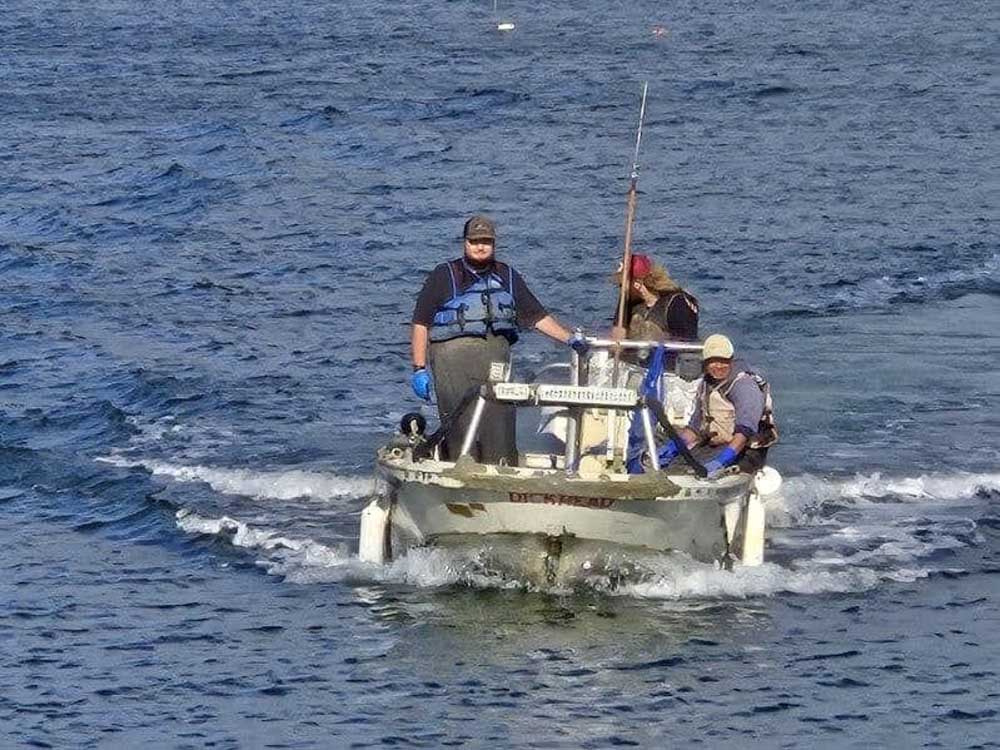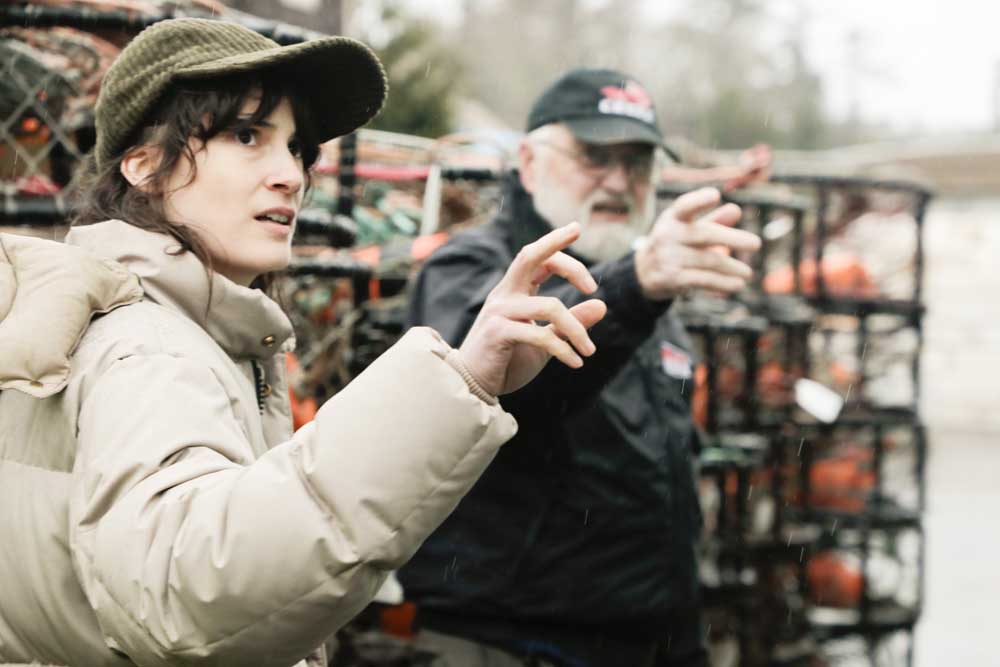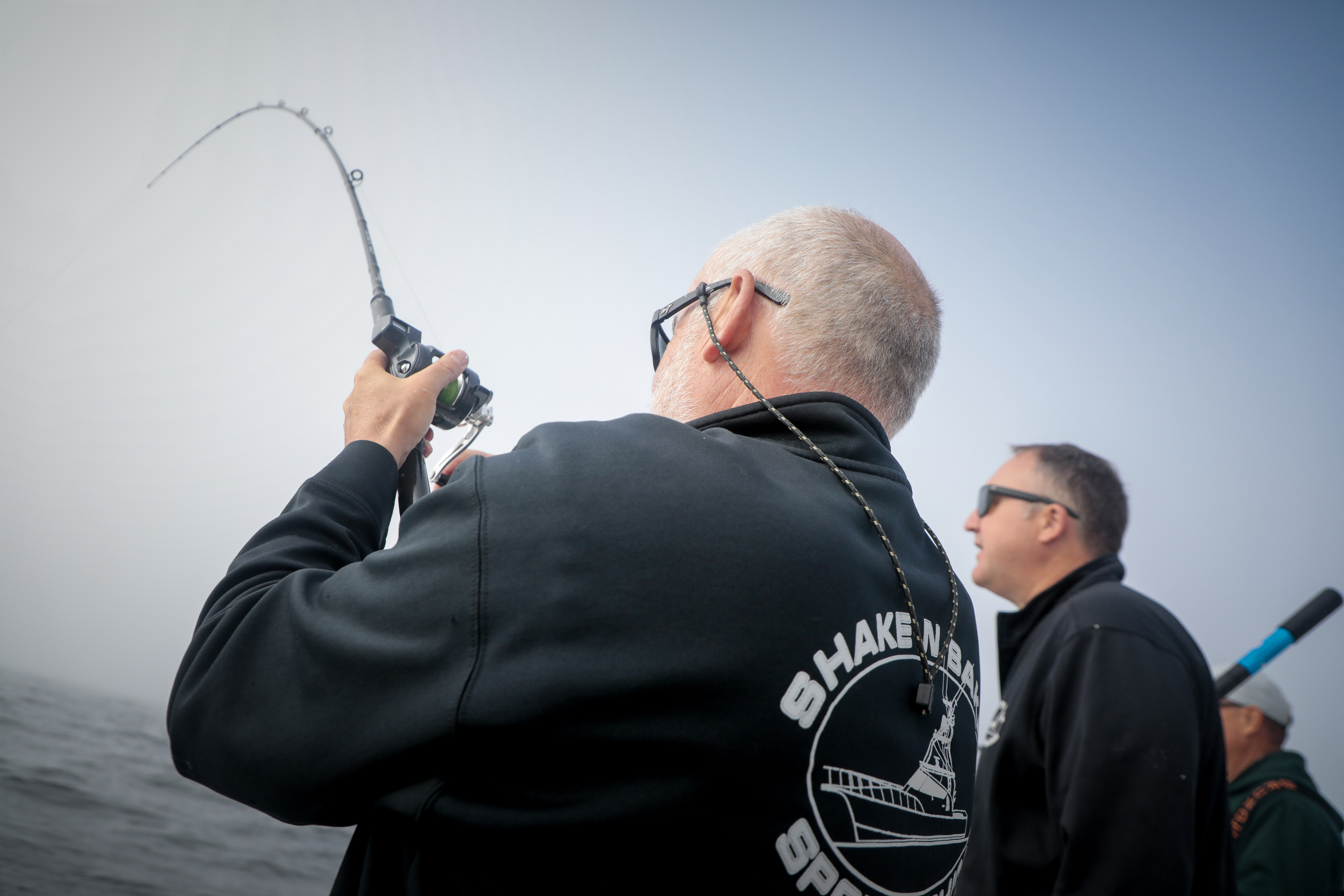More money sought for invasive crab battle
Published 12:39 pm Monday, October 7, 2024

- Warren Cowell’s Willapa Green Crab Disaster crew returns to port Sept. 18 with a haul of 4,944 European green crab, weighing 562 pounds. The destructive invasive species is experiencing a population explosion in the bay.
The European Green Crab (EGC) population continues its onslaught on Washington state coastal waters. It is quickly moving into the Salish Sea and is now invading parts of the Strait of Juan De Fuca and the Puget Sound region.
Trending
The Washington State Department of Fish and Wildlife has finalized a comprehensive six-year plan to try to trap and eradicate the EGC before it’s too late. The crab was first discovered in Pacific County in 1998, and it is in the midst of a major population explosion that began in 2015 after years of ups and downs.
Pacific County Invasive Species Management (PCISM) and the Willapa Bay Green Crab Disaster (WBGCD) team, which is overseen by Willapa Bay Shellfish Inc. (WBS), have been two driving forces in trapping efforts in the county along with the Shoalwater Bay Indian Tribe. Trappers use baited pots to catch EGC.
Rise of a problem
European green crabs were first discovered here in 1998 when 364 were trapped, primarily in Willapa Bay. This initial population peaked in 1999, with 507. The population steadily declined through 2004, when only four were caught, before a brief resurgence in 2005, when 115 were captured.
The population then went on a second decline from 2006 through 2015, during which only 76 were caught over that period. The EGC population began to rise again in 2016, increasing from 19 in 2015 to 64 in 2016 — and then 1,115 in 2018, 1,766 in 2019, and 3,971 in 2020.
The rapid explosion of EGC in Pacific County began in 2021. The population jumped 50-fold that year, from 3,971 in 2020 to 204,274. The numbers have only continued to climb, with 345,966 captured in 2023.
This year is shaping up to set a new record again for EGC in the state, with 215,580 caught in just Willapa Bay. From Aug. 21-23, the WBGCD captured over 19,655 in Willapa Bay off the Port of Peninsula in Nahcotta — including a one-day record of 6,145.
In August alone, the WBGCD caught 71,231 EGC. The September total was equally concerning, with 69,649 EGC caught — meaning that the team caught 140,880 EGC over the two-month span.
EGC poses a significant risk to native species, particularly shellfish and vulnerable Dungeness crab, which local fishermen rely heavily on for their livelihoods. The invasive crab outcompetes the Dungeness crab and preys on other species, including juvenile oysters.
Lack of funding
Washington Gov. Jay Inslee issued an emergency proclamation on Jan. 19, 2022, following an emergency measures request from WDFW Director Kelly Susewind to immediately allot funding to kick off eradicating EGC.
“In response, WDFW initiated a coordinated Incident Command System (ICS) with goals to reduce or contain EGC populations below levels that result in environmental, economic, and cultural resource harm, as well as collaborative and transparent emergency management,” Susewind stated in a letter dated Oct. 1, 2024.
WDFW and partner agencies, including the PCISM and WBGCD, have captured 905,216 of the crab from 2022 through August of this year.
A key factor affecting all parties is the need for funding, including the WBGCD, which, on July 14, announced that it was calling it quits. WBGCD is operated by Willapa Bay Shellfish Owner Warren Cowell, who has volunteered his time, effort and boats to the cause but gets no personal reimbursement.
The last straw was when one of his boats blew a $20,000 outboard motor, which was only 15 months old and only had 1,103 hours, less than half its service life. The incident meant his crew had to hobble up a used outboard to keep working their regular duties as a shellfish farm crew.
“I believe we’ve been the lead trapping team in the state all along,” Cowell stated. “We’ve modified traps and techniques and become really, really good at trapping EGC. We really wanted to lead the movement to getting rid of the EGC in Willapa Bay, but I can’t afford to go on, and after two years of trapping, it’s my opinion the state program is ‘fubar’ and has no chance of success the way it’s being run.”
A week later, Cowell announced on Facebook that WDFW had stepped up and that the two parties had “come to some solutions for the problems we’ve faced as volunteer EGC trappers.”
Millions sought
The funding issues the WBGCD has encountered are part of a larger problem of a “big issue with little funding.” The WDFW comprehensive plan aims to ensure the state and its partners can continue the war on the crab.
In the comprehensive plan, the WDFW has asked the state legislature to allot $6.08 million to the WDFW for each of 2026 and 2027, $1.35 million in 2026, and $1.2 million in 2027 to the Washington State Department of Natural Resources, and $270,000 per year for 2025-2027 to the Washington State Department of Ecology to combat EGC.
WDFW has also requested that the federal government provide annual funding to multiple agencies and funds, including $1.5 million per year to the National Oceanic and Atmospheric Association and $5 million annually to the Coastal Aquatic Invasive Species Mitigation and Grant Program Fund.
Additionally, the request asked that Congress provide $300,000 annually to the U.S. Fish and Wildlife Service specifically to fund EGC eradication efforts within the Willapa National Wildlife Reserve and Dungeness National Wildlife Refuge/Maritime National Wildlife Refuge Complex, and another $1.84 million to the WDFW for EGC efforts.
Local efforts
The comprehensive plan for mitigating the EGC invasion divides Washington into two branches: the Pacific Coast and the Salish Sea. The border is split at the tip of the state’s north coast. The branches have 14 EGC management areas.
The primary management areas in Pacific County are the South Coast, which runs along the Long Beach Peninsula, and Willapa Bay, which encompasses the entire bay region from North Cove west and south through Long Island. The county is also part of the Columbia River management area, which includes Cape Disappointment, Baker Bay and Chinook.
According to plan details, state and funding efforts will support and assist with expansive efforts to aggressively target and eradicate EGC, including through supporting and assisting with mitigation activities, performing assessment trapping, data analysis and controlled trapping, expanding trapping efforts, enabling sustainable disposal (potentially for fertilizer use), and creating outreach programs.
The Willapa Bay management area, which has been the epicenter for rapid EGC population growth, has mitigation efforts divided among several entities in Pacific County, including DNR, USFWS, PCISM, and the Shoalwater Bay Indian Tribe — and likely WBGCD through grant funding options.
“The efforts of the co-managers, tribes, and partners in Willapa Bay Management Area cannot be understated,” the comprehensive plan states. “Willapa Bay Management Area remains one of the highest priority locations for green crab management.”
“Control trapping efforts must be maintained and expanded, alongside long-term monitoring efforts to fully evaluate the impacts of trapping efforts of local green crab populations. Furthermore, monitoring and assessment of under-sampled locations within the region should occur,” the plan further adds.
If adequate funding does not materialize, local fisheries will face a dim future with the impact potential of “decimated fisheries.” One EGC female can produce 185,000 eggs annually — 1,544 female EGC were caught in Oysterville over a three-day soak on Aug. 19.









